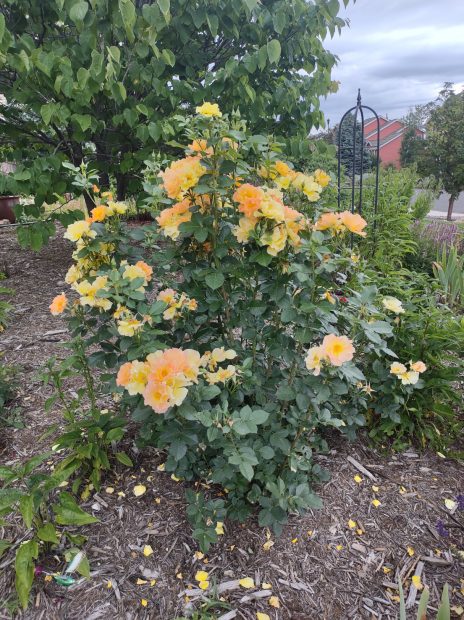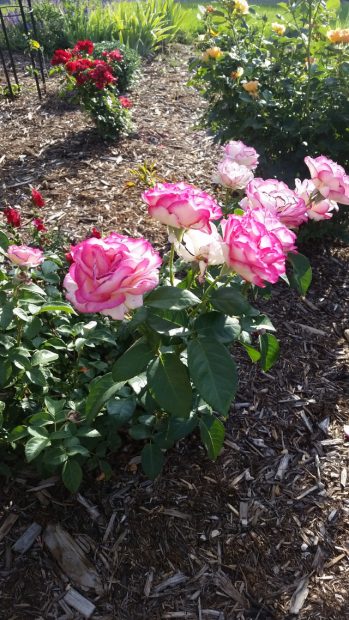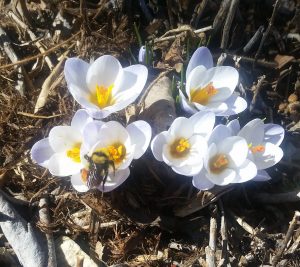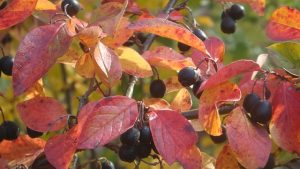You may have been led to believe that roses are high-maintenance and delicate, but there are so many choices in color, size and petal count, that they are worth the effort. Roses of all types – shrub roses, tea roses, or climbing roses – can actually tolerate a lot of abuse and neglect, but you’ll have more flowers and prettier plants if you regularly give them some attention.
- In late fall (November), cut back the long canes on shrub and tea roses so they are about 2 to 2-1/2 feet tall. This way when/if we have a heavy snow storm, the canes don’t break at the crown which can be detrimental to the plant. Climbing roses do not need to be cut this low, but you can use this time to manage the size of the plant.
- In early winter (December), tea roses or other roses that have been grafted need extra protection from cold at the base. The easiest is to mound soil and mulch to a depth of 8-10 inches at the base of the plant. You can also use a commercially available rose cone. If you’re not sure if your rose is a grafted variety, you can go ahead and create a mound at the crown of the plant – it won’t hurt it even if it wasn’t grafted.
- In early spring (April), remove the mounded soil or rose cone. Remember, not all roses need this extra protection. A rose that was labeled “own root” doesn’t require extra winter care.
- In late spring (May), the roses will need to be pruned again. For this job, wait for cues from the plant rather than choosing a date on the calendar. WAIT until the plant has budded out nicely. Sometime even the canes which look absolutely dead will surprise you and bud out if you’re patient.
First, cut out everything that’s totally dry with no signs of life. Cut these as low as possible. Then cut the remaining stalks so they are no more than 18″ tall. This is an arbitrary number, just choose a viable outward-facing leaf bud and then cut above that at an angle. Here are some pictures:
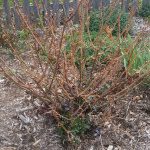
“Before” pruning, there is significant new growth at the base of the plant and new buds on the canes. 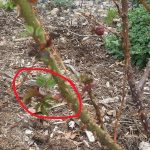
This is a viable outward-facing leaf bud. Leaves are emerging away from the center of the plant. 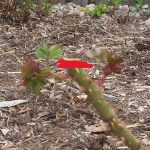
Cut above the leaf bud at an angle to preserve all the growing cells in the stem. 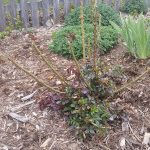
“After” pruning, the shrub is substantially smaller with only main, healthy canes.
- After pruning, fertilize your roses. Use a well-balanced fertilizer, with analysis numbers such as 10-10-10 or similar.
- In the summer (June-October), roses have a tendency to bloom in spurts – blooming, then resting, then blooming again. It is important to remove the spent flowers before the hips form to get another strong flush of flowers. The rule of thumb is to cut the flowering stem back to a five-leaflet leaf.
Roses are susceptible to black spot virus so avoid overhead watering or over watering.
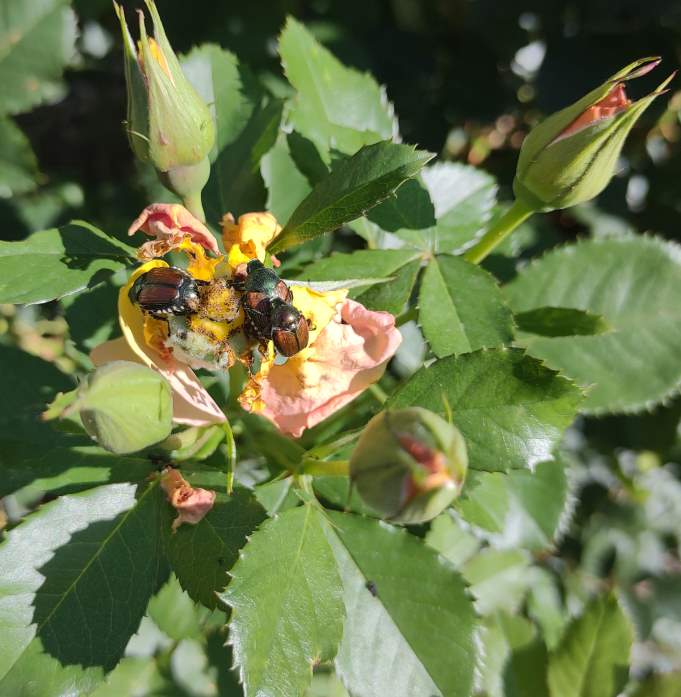
Watch for Japanese Beetles (pictured) which infest Roses, Raspberries, Grapes, Virginia Creeper, Linden and Elm trees, among other host plants. For these invasive pests, there are pheromone traps for the adult beetles. You can obtain some control by dropping them into a bucket of soapy water but this must be done on a very regular (daily) basis in the early morning. Finally, there are also options to control Japanese Beetles both as adults and when they are in the larvae/grub stage with both chemical insecticides and biological treatments. See this fact sheet from CSU for more information.
Taking good care of roses mostly means plentiful use of the by-pass pruners, but they reward the gardener with sweet-smelling flowers all summer long.


